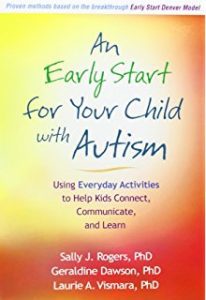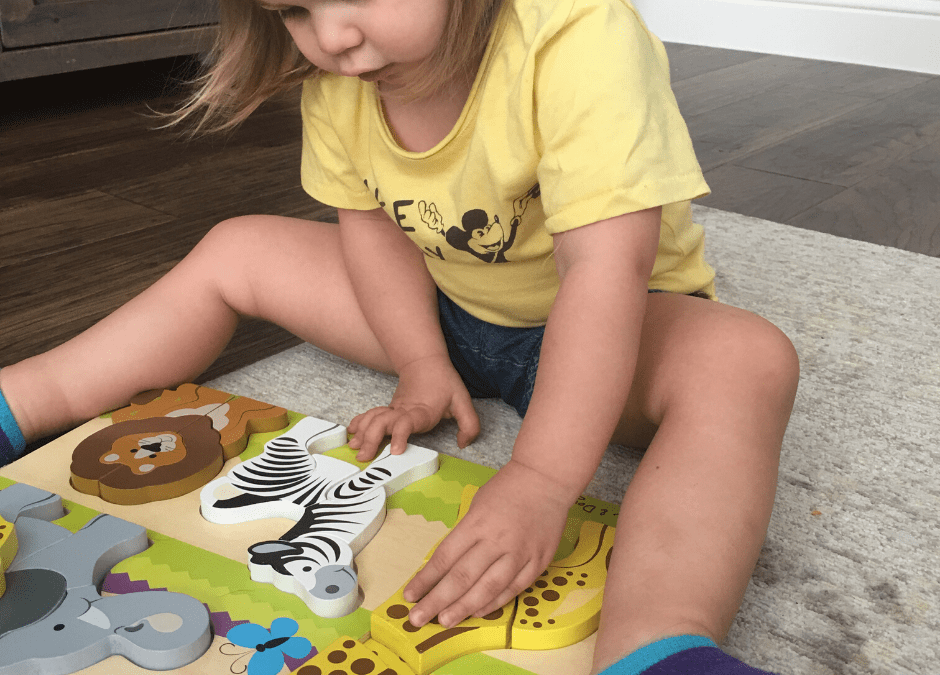Joint Attention and Autism: Six Steps to Play with your Child
Our kiddos usually have no problem playing with an app, watching a video, or interacting with electronic devices. These activities can be helpful because they give you a few minutes of total peace to complete daily tasks such as making dinner, cleaning up, or laundry. But what happens when it is time to interact? These solitary activities don’t allow kids to develop joint attention skills that are crucial to understanding that there are others in our world that provide us with information. Joint attention is important skill that begins to start the journey to observational learning. We want our kids to be able to observe and then try what they see. Play provides kids the opportunity to interact with others (including parents) to develop foundational observation skills.
Identifying ways to play with your child can be daunting! As adults we spend our days working with other adults, having conversations, and doing the work that we find to be important. But when we get home it can be a completely different story. Suddenly, we move from a domain that we feel completely confident to one that we feel totally ill prepared-play. Play can seem so juvenile, or easy, but for many adults it can be a real struggle. How do I play with my child? Add in the nuance of limited language or autism and play can seem impossible!
We talk with a lot of parents who are facing this struggle. The typical comments are:
My child is possessive and doesn’t want me to touch the toys!
My child doesn’t want to play with me.
My child doesn’t want to play.
I don’t know how to engage my child.
So, the question remains- how do I play with my child?
 The Early Start Denver Model (Rogers, Dawson & Vismara, 2012) provides parents and therapists with practical methods increase your child’s attention through play. We love these strategies because they can be immediately implemented with very little preparation or materials.
The Early Start Denver Model (Rogers, Dawson & Vismara, 2012) provides parents and therapists with practical methods increase your child’s attention through play. We love these strategies because they can be immediately implemented with very little preparation or materials.
1) Watch your child. What is your child interested in? This step is crucial because it allows you to begin to orient your perspective to your child’s perspective. As adults we frequently are self-centered in our play. We think toys or activities are cool because we purchased them or because we thought they were interesting. Many times, we are so wrong. Children have unique interests that are separate to how much effort we put into providing them with the toy. Instead, we will use their interest to guide us inside their spotlight through observation.
Positioning! Place yourself within the spotlight. This will be an active process to position yourself, so your child remains near you and they are able to see your facial expressions.
3) Actively listen to your child. Children have a wide range of play routines that they develop within a single activity. Actively listen to what your child is saying or doing and comment on what you see.
4) Narrate. In short phrases or statement narrate what your child is doing. “The train is going up.” Although this seems simple many times we confuse narrating with asking questions. The process of narration is to simply comment on what your child is doing as it is happening without trying to influence the activity.
5) Help. Fine or gross motor limitations can slow down play routines. Being present to help and fix a play routine builds rapport and allows your child to incorporate you within the play spotlight.
6) Imitate. Imitation begins to help shift attention away from the toy and onto the play partner- YOU! Always have a duplicate item to play with at the same time as your child. Avoid taking turns with the same item as it can cause frustration if they haven’t mastered sharing or toleration. As your child builds a tower, build a tower next to them (but still within their spotlight). If you child rolls a car, roll your car alongside. Imitation can also extend to sound effects and songs. Even the simplest sound effect imitation can begin to shift attention from a solitary activity to a cooperative experience. This signals to the child- we are all in this together.
When you begin to play with your child, it is not uncommon to have a little behavior. Remember, previously no one has touched their toys or inserted themselves into the play space! Continue to follow the steps each day and intentionally show up during the play routine. Remind yourself that we are teaching play to increase attention skills that are essential for observational learning.
For more resources we highly suggest visiting https://extension.ucdavis.edu/subject-areas/early-start-denver-model . Still have more questions? Contact us!

